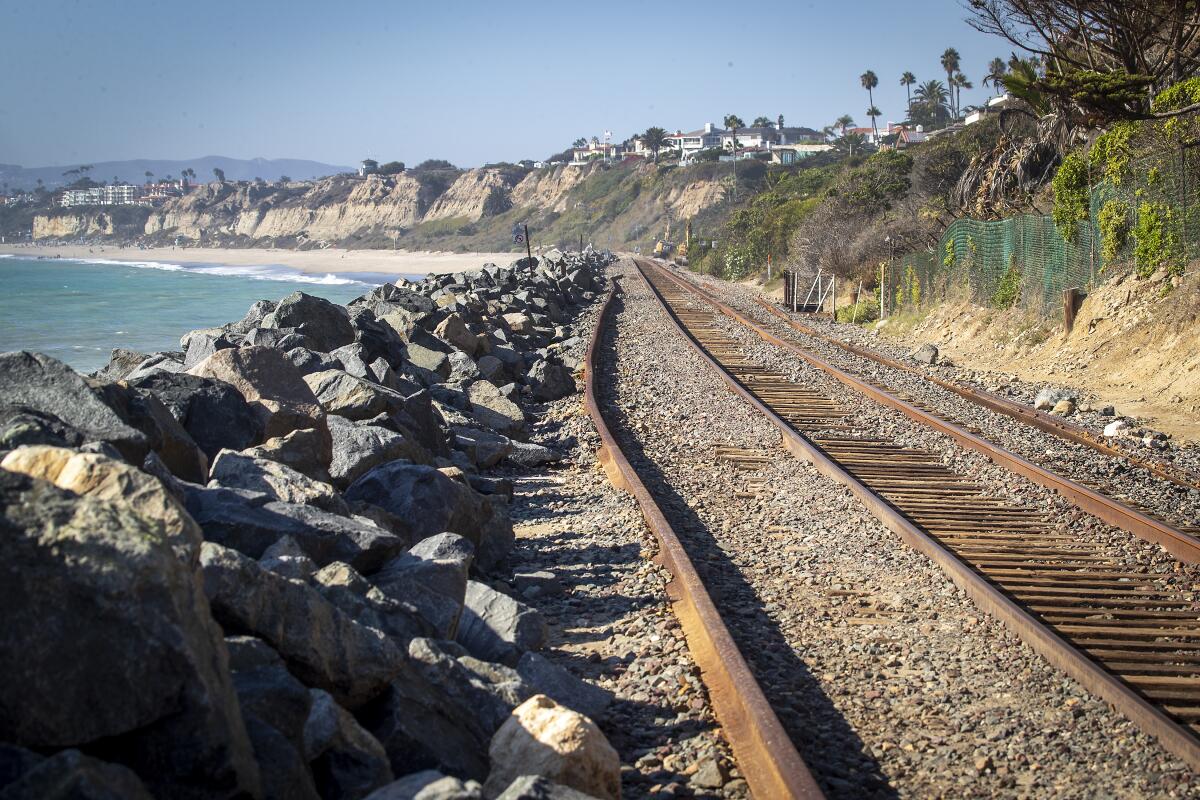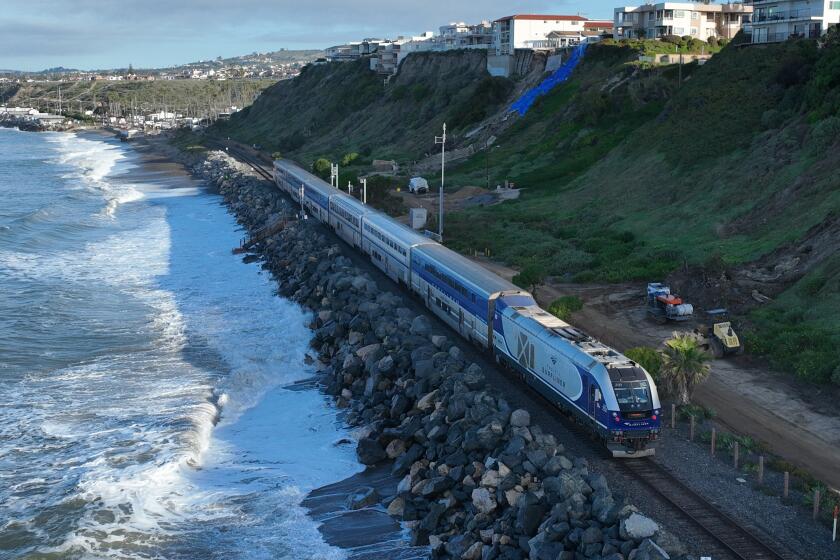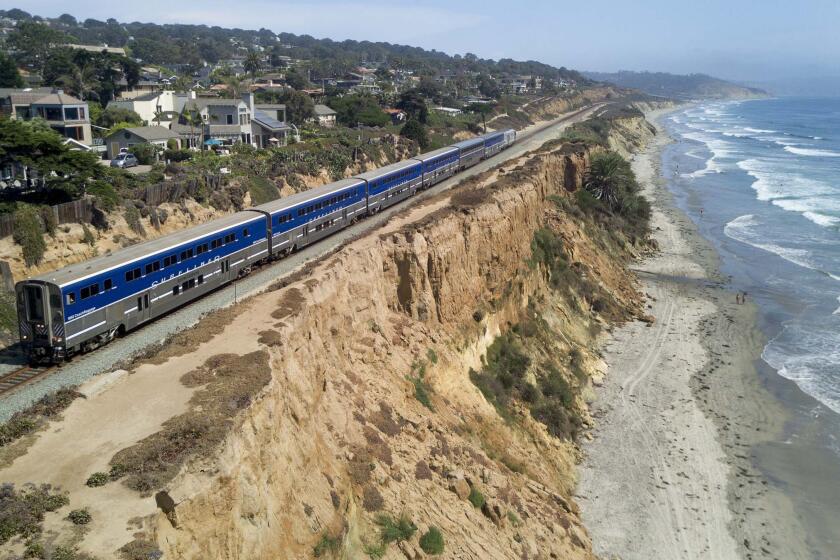Environmental groups take hard stance on armoring San Clemente’s coastal rail line

- Share via
Transportation officials and environmental groups remain at odds over how to save San Clemente’s beaches and the vital rail corridor that curls along its coastline.
In April, the Orange County Transportation Authority considered a sand buffer as part of its preliminary plans to hard armor the train tracks with a seawall of stones to protect them from the pulse of crashing waves.
But the plan to cover large boulders, known as riprap, with sand hasn’t quieted concerns over further armoring San Clemente’s beaches.
After a listening session in June, environmental groups signed onto a joint letter that called on OCTA to conduct a full environmental impact report and submit a coastal development permit before adding anymore seawalls to the city’s beaches.
“Proper environmental review under [the California Environmental Quality Act] and the California Coastal Act will ensure that OCTA selects the least environmentally damaging alternative, mitigates impacts and provides for meaningful public input,” the letter read. “All viable alternatives to shoreline armoring must be carefully examined, including nature-based alternatives, rail relocation or retirement and train speed management.”
The letter dated July 16 was signed by representatives of nine organizations, including the Surfrider Foundation, Capo Cares, and Save Our Beaches San Clemente.
The Orange County Transportation Authority is now considering sand nourishment as part of a potential solution to guard San Clemente’s train tracks from eroding beaches and fragile bluffs.
“It’s important to point out that we are still amid the planning process for addressing an urgent need to protect what is a critical link in Southern California’s rail system,” said Eric Carpenter, a spokesperson for OCTA. “What OCTA has developed to this point is at a conceptual level and we do not have any specific project proposals.”
Situated between eroding beaches and buckling bluffs, passenger train services have been interrupted five times in the past four years, most recently after a landslide in January collapsed the Mariposa Point beach trail bridge and sent debris hurling down towards the train tracks.
OCTA owns the 7-mile segment of the Lossan corridor, which also transports freight from San Luis Obispo to San Diego. The agency is currently studying short-term and long-term proposals to secure the train tracks from future suspensions of service.
State Sen. Catherine Blakespear, whose district encompasses south O.C. and northern San Diego County, has been vocal about OCTA needing to get on board with relocating the tracks inland as opposed to spending money on “protect in place” strategies.
Landslides in Orange County continue to disrupt the coastal rail line that carries Amtrak’s Pacific Surfliner. Is it time to trade stunning views for a reliable route?
In response to hard armoring proposals in San Clemente, the Surfrider Foundation’s legal counsel sent a standalone letter to the California Coastal Commission with concerns over potential violations of state law.
It demanded that OCTA and the Southern California Regional Rail Authority comply with the state’s Environmental Quality Act and Coastal Act by completing an environmental impact report.
“OCTA is committed, as is the case with any infrastructure project whether it’s rail, freeways or streets, to following all necessary environmental requirements,” Carpenter said. “Once the concepts are more fully developed, the scope of any proposed projects will dictate the environmental process we are required to follow.”
The agency is expected to update to its board of directors on future plans for the rail line later this month.
Both OCTA and the rail authority stood accused by the Surfrider Foundation of evading environmental reviews in the past under the cover of emergency riprap permits, which led to impeded access to San Onofre State Beach.
If allowed to do so again, the letter argued, hard armoring without environmental review would imperil San Clemente State Beach, even though the beach isn’t considered a “hot spot” for erosion.
“The public will lose one of the most popular beaches and last easily accessible stretch of scenic undeveloped coastline in Southern California,” the letter warned.
In hoping to avoid any such outcomes, the Surfrider Foundation letter concluded by drawing a line in the beach sand.
“The public is not willing to sacrifice our beaches for the train.”
All the latest on Orange County from Orange County.
Get our free TimesOC newsletter.
You may occasionally receive promotional content from the Daily Pilot.








